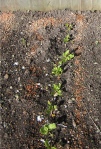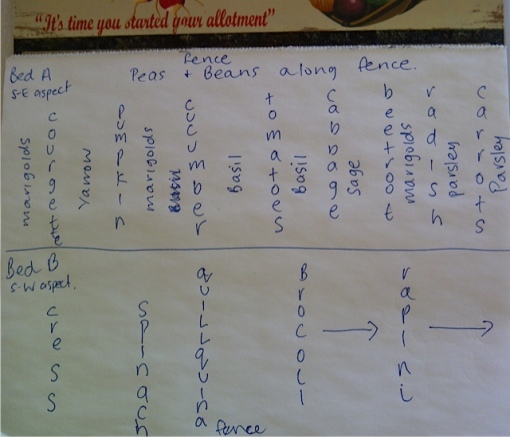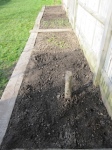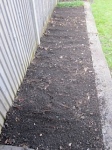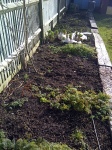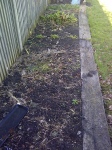Plant your seeds four in a row;
one for the pheasant and one for the crow,
one to rot and one to grow.
Ok. So according to this old wives tale, I need to plant four seeds and hopefully one will actually grow. If they all manage to survive I guess I can pull up the weakest ones, or put them in a pot and give them to friends of neighbours!
Our weather is very variable in Sussex at the moment. I noted last week that we had some warm weather. Unfortunately this week has mostly been cold with very heavy rain (even hail) and high winds. Just the worse possible weather you can imagine. Not very conducive to getting out into the vegetable garden. Today had dawned a little brighter and I actually hung the washing outside. Tempting fate I know!
I couldn’t dilly-dally any longer and I have finally planted my seeds. I put some in little seedling pots with some seedling soil I purchased from our local garden centre. I mixed in a little bit of compost from the compost bin. Not too sure if that is a good idea but I wanted to get them off to the best start possible. As my title this week states – be nice to your seedlings and they will be nice to you!
The others I have sewn directly into the ground. I was very generous with the seeds (even more so than our rhyme above recommends) as I wrote in my post here, most of the seeds are given to me and are a season or so old. Not sure how many will germinate.
In pots I have planted courgette, cucumber, tomatoes, ‘Burgess Buttercup Winter Squash’, ‘Cherokee Trail of Tears’ – a climbing french bean, ‘Minidor’ a yellow dearf french bean, ‘Cupidon’ dwarf filet type french bean, ‘Serpette Guilloteau’ climbing pea. As well as ‘Telephone’ tall climbing pea. All the named varieties are given by a neighbour and are from The Real Seed Catalogue company. Looking forward to seeing how they perform.
In the ground I have planted parsley, lettuce, radish, carrot, beetroot and Mibuna greens. I have layed out the vegetable patch to my planting plan which I posted here.
I know it seems like an awful lot, but I have not planted loads of pots as I don’t want to overcrowd the plants of overwhelm myself!
**Make sure you leave a comment and let me know how you are getting on in your vegetable garden.**
Simone.
© Simone L Woods 2012
Subscribe to my email list to get each weeks post direct to your inbox.


